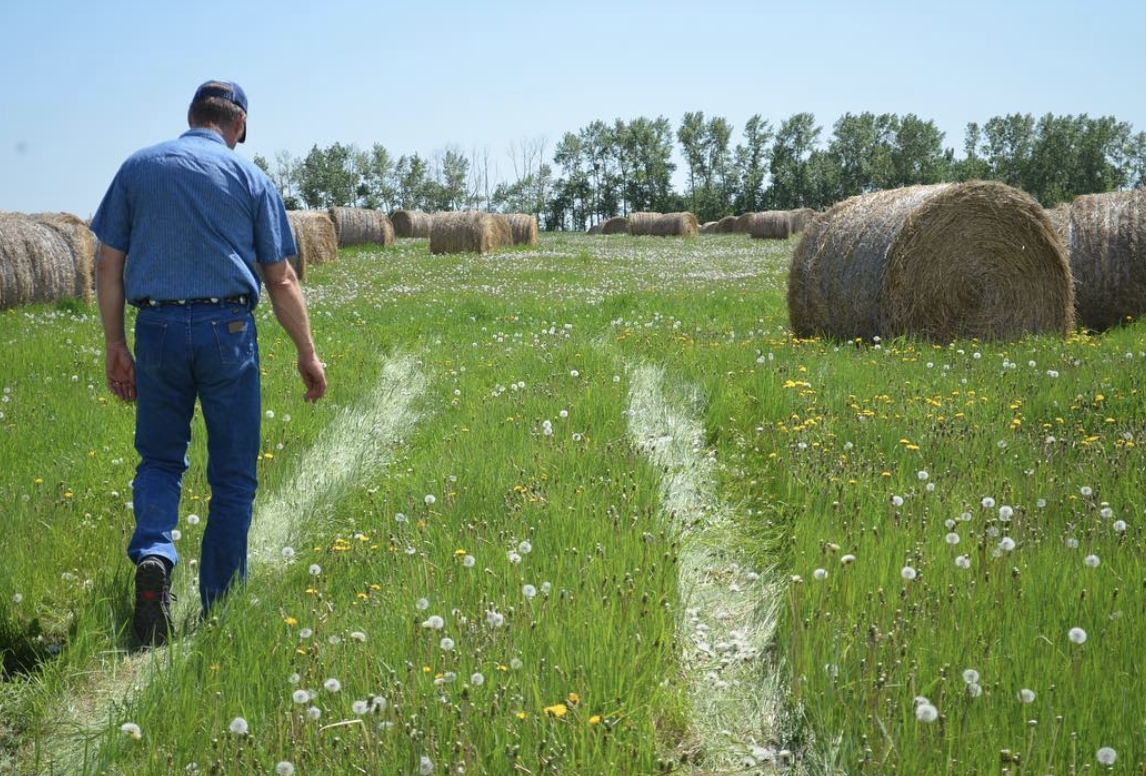
Features
Applications
Beef
Livestock Production
Manure Application
Manure Management
United States
Fertilize fields with hay
Winter-feeding beef cattle on hay and pasture fields can minimize labor of hauling manure while still distributing crop nutrients.
May 2, 2018 by Michigan State University Extension

Many Beef cow-calf producers feed hay rations to cows in confinement settings during the winter months. Feeding hay on fields away from the barn is gaining popularity.
Labor and machinery requirements of hauling manure can be minimized by winter-feeding beef cattle on fields. Care should be taken with feeding practices to ensure that crop nutrients are evenly distributed.
Feeding on fields is typically accomplished by strategically spacing hay bales around the field either with or without hay rings frequently referred to as bale grazing. Another feeding method on fields includes unrolling bales on the ground. Unrolling bales on the ground typically allows for better crop nutrient distribution.
Spacing bales across a field creates a situation of concentrated nutrients from manure and waste hay in the areas where bales are fed. Over time, nutrient distribution can equalize with good grazing and management practices to promote soil health. Nutrients can be distributed by livestock and soil microbes over time, however, uniform nutrient spreading is more ideal for crop production yields.
Utilizing the various feeding methods can result in a wide range of hay waste. Producers need to weigh cost savings associated with winter feeding on fields and feed loss with any given feeding method.
Feeding on fields allows nearly 100 percent nutrient cycling into the soil for both phosphorous and potassium while nitrogen capture will be variable. Consequently, hay waste is not a 100 percent loss.
Much of the crop nutrients from hay waste is available to the next growing crop. If hay is harvested on the farm, nutrients are simply redistributed to the feeding area. If hay is purchased, those nutrients are added into the farm nutrient pool.
Purchasing hay and bringing nutrients onto the farm can be a cost-effective addition of fertilizer to the farm. The vast majority of fertilizer costs for crop production are for application of nitrogen, phosphorous and potassium. Producers should use a feed analysis of purchased feed to determine its fertilizer value. Producers can use dry matter, crude protein, phosphorous and potassium content to determine fertilizer value.
Dry feeds will usually contain 10 to 15 percent moisture or 85 to 90 percent dry matter. A 1,000 lb. bale of dry hay with 15 percent moisture will contain 850 lb. of dry matter. Ensiled feeds will contain considerably more moisture.
Protein contains 16 percent nitrogen. Crude protein is calculated by multiplying the percent nitrogen by a conversion multiplier of 6.25. From the example hay analysis, 10.6 percent crude protein can be multiplied by 0.16 or divided by 6.25 to equal a rounded off 1.7 percent nitrogen.
The nitrogen content multiplied by the dry hay bale weight of 850 lb. equals 14.45 lb. of nitrogen in the bale of hay. The percent phosphorous (0.18 percent) and potassium (1.6 percent) are also multiplied by the 850 lb. of dry matter hay to equal 1.53 lb. of phosphorous and 13.6 lb. of potassium.
Producers must be aware of the differences between feed analysis and fertilizer analysis. Feed analysis are recorded as percent crude protein, elemental phosphorous, and elemental potassium.
Fertilizer analysis is recorded as percent elemental nitrogen, phosphate (P2O5), and potash (K2O). Using Upper Peninsula of Michigan fertilizer prices, nitrogen is valued at $0.47/lb. N, phosphate at $0.35/lb. of P2O5, and potash at $0.325/lb. K2O.
The calculated fertilizer value of the 1,000 lb. bale of hay is worth $7.07/bale or $14.14/ton. Current value of this quality of hay is roughly $80-100 per ton. In this example, about 15 percent of the value of average beef quality hay can be attributed to its fertilizer value. Farms that are marginal on soil nutrient levels may consider purchasing at least a portion of their feed to increase crop nutrients on the farm and replace some portion of purchased commercial fertilizer.
Feeding hay on fields during the winter months has several advantages that beef producers can use to offset some of the production costs associated with beef production.
For more information regarding the impact of feeding hay on pasture and hay fields, contact MSU Extension Educators Frank Wardynski, 906-884-4386 or wardynsk@anr.msu.edu or Jim Isleib, 906-387-2530 or isleibj@anr.msu.edu.
This article was published by Michigan State University Extension. For more information, visit http://www.msue.msu.edu.